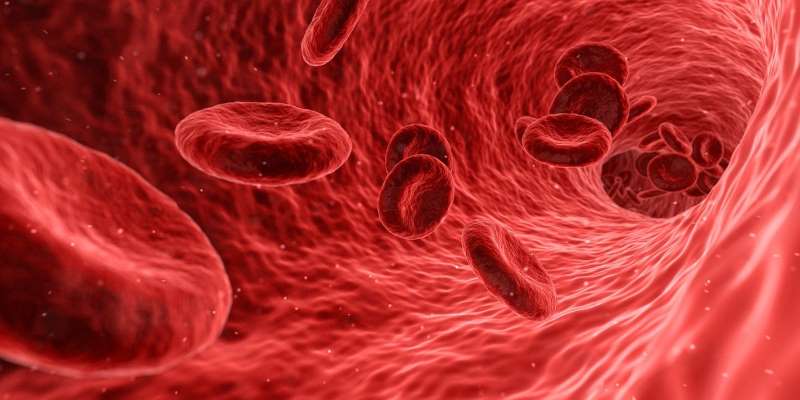In 1942, “in an attempt to revive Pope Innocent VIII from a coma…physicians transfused the dying pontiff with blood from three young boys.” However, it wasn’t worth the ‘ducat’ coin that the boys were promised for their participation seeing as “everybody died in the rejuvenation attempt” (Scott & DeFrancesco: 2017).
Using young blood transfusions is not a new concept. But, despite its historic roots, it has recently become the unique selling point for a few progressive and forward-thinking businesses. Their aim: to reduce senescence through scientific and technological development involving young blood.
However, these companies face certain obstacles due to the fact that the anti-aging industry has previously struggled with a lack of credibility (Olshansky: 2002). Nevertheless, more recently, this industry has turned a corner. The marriage of scientific breakthroughs with financial backing from notable individuals and credible companies means that this previously unconvincing industry has now established the foundations for robust growth (Scott & DeFrancesco: 2017; Magalhães: 2017). And it’s unsurprising given that “age-related diseases like cardiovascular diseases, cancer, and neurodegenerative diseases” are the “leading causes of death worldwide” (Magalhães: 2017).
When considering this, it’s clear why the “tremendous commercial opportunities” offered by this industry has enticed the very people it needed to instil credibility (Magalhães: 2017). Therefore, it’s clear that the financial opportunities offered have paved the way for business, with young blood transfusions being one of the most unusual.
People receive normal blood transfusions for many reasons (severe accidents, childbirth, to treat anaemia, thalassaemia etc). Regardless of the reason, anyone receiving a blood transfusion depends on healthy blood donors to donate. Actually, a recent study found evidence to suggest that regular blood donation may, in fact, help donors live longer; however, due to the participant sample naturally being healthier individuals, more research is needed.
Whereas the transfusion of healthy blood to a person in need is commonplace, blood transfusions from young people to healthy individuals is less so. The developments that have provided the groundwork for business ventures to invest in this technique are based on a laboratory technique called parabiosis. Parabiosis is a technique referring to “the condition in which two entire living animals are joined surgically and develop a single, shared circulatory system” (Conboy: 2013). The benefits of parabiosis are typically assessed through testing on mice. Scientists noticed that when old mice shared the circulatory system of young mice there was an improvement in tissue function and longevity, whereas the opposite happened to the young mice (Magalhães: 2017).
In fact, the benefits go further than this. Another study indicated that “exposure of an aged animal to young blood can counteract and reverse pre-existing effects of brain aging” particularly within the area of the brain dependent on learning and memory – the hippocampus (Vileda: 2014).
It’s important to take these benefits with a pinch of cynicism however. Successful testing on mice doesn’t always translate in the same way to humans and this is enough to hinder investment from certain people. On the other hand however, humans can’t help but endlessly search for new solutions. The world’s optimists see this as an opportunity to simultaneously improve peoples’ “healthspan” and the economy by eradicating senescence whilst generating profit. One such company is Alkahest.
Situated in Silicon Valley, where the movement of transhumanism originated, is Alkahest’s laboratory. Tony Wyss-Coray, one of the scientists involved in the aforementioned study which improved the hippocampus in mice, is one of the co-founders of Alkahest. The company has approximately 80 employees and over $41.5 million in funding, yet it retains its integrity – “we’ve seen so much in our animal models that convinces us, but we need to learn from people…we’re not just big mice”, a quote from the chief scientific officer, Steven Braithwaite.
Alkahest has a few potential products in the pipeline. The product which seems to be the most likely to break into the public realm is AKST4290, a molecule small enough to be converted into a pill for easier administration – a far cry from blood transfusions and much more appealing to the general public. With two other ideas in the pipeline, Selected Plasma Fractions and Targeting Beta-2 Microglobulin (the former having completed a Phase 2 trial and the latter a pilot trial), the future is looking promising for Alkahest.
Whilst science and clinical trials are upholding the credibility of using young blood as a potential cure for senescence for Alkahest, a lack of published evidence is, conversely, causing difficulties for companies such as Ambrosia.
Ambrosia, founded by Jesse Karmazin, provided blood transfusions of young plasma for a fee of $8,000 per litre as a way to overcome senescence. However, after customers were given a general warning from the U.S. Food and Drug Administration (FDA) which stated that there was no proven evidence of the benefits, Karmazin halted operations to better understand the FDA’s decision. Although stopping business to respond to the FDA isn’t financially beneficial, it does indicate credibility – a seemingly crucial factor for the development of anti-aging ventures.
Although our way of dealing with death is not universal, it has established incentives within capitalism that make the anti-aging industry very profitable. However, the profitability in this area is dependent on credibility which is now a key driving factor for these companies. Therefore, it seems that as science and technology develops, so does the demand for evidence-based products within the area of eradicating senescence.
Even though Ambrosia is expecting to bounce back, a lack of published data has inhibited it. For Alkahest on the other hand, the volumes of published articles and scientific studies has helped it go from strength to strength, receiving funding throughout. These companies could yet become key players in the anti-aging industry, credibility permitting.
Scott, C.T. & DeFrancesco, L. (2017) Selling Long Life, Nature Biotechnology, 33, No.1.
Magalhães, J.P. et al. (2017), The Business of Anti-Aging Science, Trends in Biotechnology, Vol. 35, No. 11.
Olshansky, S.J. et al. (2002), No truth to the fountain of youth. Sci.Am. 286, 92-95.















